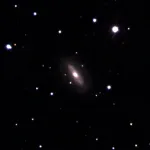(Press-News.org) Quantum dots are manmade nanoparticles of semiconducting material comprising only a few thousand atoms. Because of the small number of atoms, a quantum dot's properties lie between those of single atoms or molecules and bulk material with a huge number of atoms. By changing the nanoparticles' size and shape, it is possible to fine-tune their electronic and optical properties - how electrons bond and move through the material, and how light is absorbed and emitted by it.
Thanks to increasingly refined control of the nanoparticles' size and shape, the number of commercial applications has grown. Those already available include lasers, LEDs, and TVs with quantum dot technology.
However, there is a problem that can impair the efficiency of devices or appliances using this nanomaterial as an active medium. When light is absorbed by a material, the electrons are promoted to higher energy levels, and when they return to their fundamental state, each one can emit a photon back to the environment. In conventional quantum dots the electron's return trip to its fundamental state can be disturbed by various quantum phenomena, delaying the emission of light to the exterior.
The imprisonment of electrons in this way, known as the "dark state", retards the emission of light, in contrast with the path that lets them return quickly to the fundamental state and hence to emit light more efficiently and directly ("bright state").
This delay can be shorter in a new class of nanomaterial made from perovskite, which is arousing considerable interest among researchers in materials science as a result (read more at: agencia.fapesp.br/32682/).
A study conducted by researchers in the Chemistry and Physics Institutes of the University of Campinas (UNICAMP) in the state of São Paulo, Brazil, in collaboration with scientists at the University of Michigan in the United States, made strides in this direction by providing novel insights into the fundamental physics of perovskite quantum dots. An article on the study is published in Science Advances.
"We used coherent spectroscopy, which enabled us to analyze separately the behavior of the electrons in each nanomaterial in an ensemble of tens of billions of nanomaterials. The study is groundbreaking insofar as it combines a relatively new class of nanomaterials - perovskite - with an entirely novel detection technique," Lázaro Padilha Junior, principal investigator for the project on the Brazilian side, told Agência FAPESP.
FAPESP supported the study via a Young Investigator Grant and a Regular Research Grant awarded to Padilha.
"We were able to verify the energy alignment between the bright state [associated with triplets] and the dark state [associated with singlets], indicating how this alignment depends on the size of the nanomaterial. We also made discoveries regarding the interactions between these states, opening up opportunities for the use of these systems in other fields of technology, such as quantum information," Padilha said.
"Owing to the crystal structure of perovskite, the level of bright energy divides into three, forming a triplet. This provides various paths for excitation and for the electrons to return to the fundamental state. The most striking result of the study was that by analyzing the lifetimes of each of the three bright states and the characteristics of the signal emitted by the sample we obtained evidence that the dark state is present but located at a higher energy level than two of the three bright states. This means that when light is shone on the sample the excited electrons are trapped only if they occupy the highest bright level and are then shifted to the dark state. If they occupy the lower bright levels, they return to the fundamental state more efficiently."
To study how electrons interact with light in these materials, the group used multidimensional coherent spectroscopy (MDCS), in which a burst of ultrashort laser pulses (each lasting about 80 femtoseconds, or 80 quadrillionths of a second) is beamed at a sample of perovskite chilled to minus 269 degrees Celsius.
"The pulses irradiate the sample at tightly controlled intervals. By modifying the intervals and detecting the light emitted by the sample as a function of the interval, we can analyze the electron-light interaction and its dynamics with high temporal precision, mapping the typical interaction times, the energy levels with which they couple, and the interactions with other particles," Padilha said.
The MDCS technique can be used to analyze billions of nanoparticles at the same time and to distinguish between different families of nanoparticles present in the sample.
The experimental system was developed by a team led by Steven Cundiff, principal investigator for the study at the University of Michigan. Some of the measurements were made by Diogo Almeida, a former member of Cundiff's team and now at UNICAMP's ultrafast spectroscopy laboratory with a postdoctoral fellowship from FAPESP under Padilha's supervision.
Quantum dots were synthesized by Luiz Gustavo Bonato, a PhD candidate at UNICAMP's Chemistry Institute. "The care Bonato took in preparing the quantum dots and his protocol were fundamentally important, as evidenced by their quality and size, and by the properties of the nanometric material," said Ana Flávia Nogueira, co-principal investigator for the study in Brazil. Nogueira is a professor at the Chemistry Institute (IQ-UNICAMP) and principal investigator for Research Division 1 at the Center for Innovation in New Energies (CINE), an Engineering Research Center (ERC) established by FAPESP and Shell.
"The results obtained are very important since knowledge of the optical properties of the material and how its electrons behave opens up opportunities for the development of new technologies in semiconductor optics and electronics. The incorporation of perovskite is highly likely to be the most distinctive feature of the next generation of television sets," Nogueira said.
INFORMATION:
About São Paulo Research Foundation (FAPESP)
The São Paulo Research Foundation (FAPESP) is a public institution with the mission of supporting scientific research in all fields of knowledge by awarding scholarships, fellowships and grants to investigators linked with higher education and research institutions in the State of São Paulo, Brazil. FAPESP is aware that the very best research can only be done by working with the best researchers internationally. Therefore, it has established partnerships with funding agencies, higher education, private companies, and research organizations in other countries known for the quality of their research and has been encouraging scientists funded by its grants to further develop their international collaboration. You can learn more about FAPESP at http://www.fapesp.br/en and visit FAPESP news agency at http://www.agencia.fapesp.br/en to keep updated with the latest scientific breakthroughs FAPESP helps achieve through its many programs, awards and research centers. You may also subscribe to FAPESP news agency at http://agencia.fapesp.br/subscribe.
A machine learning algorithm that predicts suicide attempt recently underwent a prospective trial at the institution where it was developed, Vanderbilt University Medical Center.
Over the 11 consecutive months concluding in April 2020, predictions ran silently in the background as adult patients were seen at VUMC. The algorithm, dubbed the Vanderbilt Suicide Attempt and Ideation Likelihood (VSAIL) model, uses routine information from electronic health records (EHRs) to calculate 30-day risk of return visits for suicide attempt, and, by extension, suicidal ideation.
Suicide has been on the rise in the U.S. for a generation ...
What The Study Did: Researchers investigated whether acute COVID-19 symptoms are associated with the probability of subsequent depressive symptoms.
Authors: Roy H. Perlis, M.D., M.Sc., of the Massachusetts General Hospital in Boston, is the corresponding author.
To access the embargoed study: Visit our For The Media website at this link https://media.jamanetwork.com/
(doi:10.1001/jamanetworkopen.2021.3223)
Editor's Note: Editor's Note: The article includes conflict of interest and funding/support disclosures. Please see the article for additional information, ...
What The Study Did: National claims data were used to look at changes in well-child care visits with out-of-pocket costs before and after passage of the Affordable Care Act.
Authors: Paul R. Shafer, Ph.D., of Boston University, is the corresponding author.
To access the embargoed study: Visit our For The Media website at this link https://media.jamanetwork.com/
(doi:10.1001/jamanetworkopen.2021.1248)
Editor's Note: Editor's Note: The article includes conflicts of interest disclosures. Please see the article for additional information, including other authors, author contributions and affiliations, conflict of interest and financial disclosures, and funding ...
What The Study Did: Researchers compared rates of psychotropic drug prescriptions during adolescence and young adulthood between individuals born preterm and at term.
Authors: Christine S. Bachmann, M.D., of the Norwegian University of Science and Technology in Trondheim, Norway, is the corresponding author.
To access the embargoed study: Visit our For The Media website at this link https://media.jamanetwork.com/
(doi:10.1001/jamanetworkopen.2021.1420)
Editor's Note: Editor's Note: The article includes funding/support disclosures. Please see the article for additional information, including other authors, ...
(Philadelphia, PA) - About 6.2 million Americans suffer from heart failure, an incurable disease with a staggering mortality rate - some 40 percent of patients die within five years of diagnosis. Heart failure is one form of heart disease, for which new therapies are desperately needed.
Now, in new work, scientists at the Lewis Katz School of Medicine (LKSOM) at Temple University identify a path to a promising novel therapeutic strategy, taking aim at a molecule in the heart known as G protein-coupled receptor kinase 5 (GRK5). In a study published online in the journal Cardiovascular Research, the scientists show in mice that reducing GRK5 levels can significantly improve survival ...
Scientists have long theorized that supermassive black holes can wander through space--but catching them in the act has proven difficult.
Now, researchers at the Center for Astrophysics | Harvard & Smithsonian have identified the clearest case to date of a supermassive black hole in motion. Their results are published today in the Astrophysical Journal.
"We don't expect the majority of supermassive black holes to be moving; they're usually content to just sit around," says Dominic Pesce, an astronomer at the Center for Astrophysics who led the study. "They're just so heavy that it's tough to get them going. Consider how much more ...
Since the pandemic hit, researchers have been uncovering ways COVID-19 impacts other parts of the body, besides the lungs.
Now, for the first time, a visual correlation has been found between the severity of the disease in the lungs using CT scans and the severity of effects on patient's brains, using MRI scans. This research is published in the American Journal of Neuroradiology. It will be presented at the 59th annual meeting of the American Society of Neuroradiology (ASNR) and has also been selected as a semifinalist for that organization's Cornelius Dyke Award.
The results show that by looking at lung CT scans of patients diagnosed with COVID-19, physicians may be able to predict just how badly they'll experience other ...
ITHACA, N.Y. - A new Penn State and Cornell study describes an effort to produce the most comprehensive and high-resolution map yet of chromosome architecture and gene regulation in yeast, a major step toward improving understanding of development, evolution and environmental responses in higher organisms.
Specifically, the study mapped precise binding sites of more than 400 different chromosomal proteins in the yeast genome, most of which regulate the expression of genes.
Yeast cells provide a simple model system with 6,000 genes, most of which are found in other organisms, including humans, making them excellent candidates for studying fundamental genetics and complex biological pathways.
The paper, "A High-Resolution Protein Architecture of the Budding Yeast ...
Around three times as many males are diagnosed with autism than females. This suggests that biological sex factors may play a role in the development and presentation of autism.
Studies on the neurobiology (brain biology) of males and females with autism have begun to examine brain networks but results have been mixed. This is largely due to the limited availability of data from autistic females.
In response, researchers from END ...
Humans rely on nature extensively for everything from food production to coastal protection, but those contributions might be more threatened than previously thought, according to new findings from the University of Colorado Boulder.
This research, out today in Nature Communications, looked at three different coastal food webs that include those services provided to humans, or ecosystem services, and found that even if the services themselves aren't directly threatened, they can become threatened when other species around them go extinct--often called secondary ...



